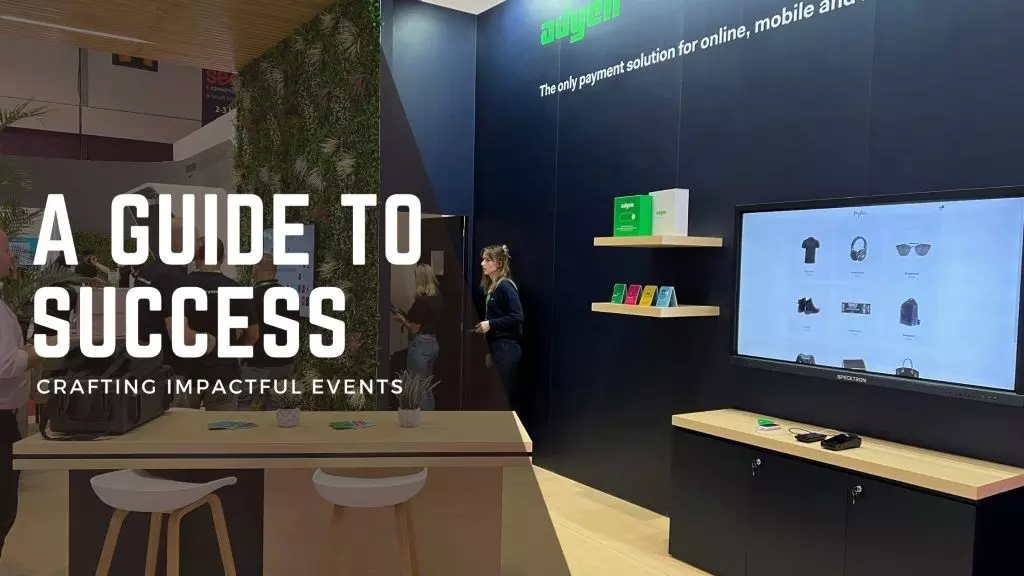Designing Impactful Experiences: Key Elements Of Successful Events
image for illustrative purpose

In today's fast-paced world, the success of an event often hinges on the experience it offers attendees. As people become increasingly discerning about how they spend their time, event organizers must elevate their approach to design and production. Making experiences that have an impact takes more than just planning. You need to know your audience well, think outside the box, and pay close attention to the little things. Here, we'll talk about the most important things that make events great and how they can help you create experiences that people will never forget.
1. Understanding Your Audience
Knowing your crowd inside and out is the key to making any event a success. Who are they? What do they like, what do they expect, and what are their interests? It is important to do the study before an event. You can learn a lot about what your audience likes by using surveys, focus groups, and social media data.
Once you have a clear picture of your attendees, tailor the event to meet their needs. This might involve selecting relevant themes, topics, or formats that appeal to their interests. By ensuring that the event is designed with the audience in mind, you set the stage for a more engaging and meaningful experience.
2. Creating a Compelling Narrative
Every great event tells a story. A compelling narrative not only draws attendees in but also gives them a sense of purpose and connection to the experience. The narrative should align with the event's goals and themes, providing a framework that guides all elements of the production.
Consider how you can weave the narrative throughout the event. This could involve using storytelling techniques in presentations, incorporating live performances, or creating interactive installations that immerse attendees in the storyline. By engaging attendees emotionally, you increase their investment in the experience, making it more memorable.
3. Innovative Design and Aesthetics
The visual appeal of an event plays a crucial role in shaping attendees' perceptions and experiences. Innovative design can transform a mundane venue into a captivating environment. This includes everything from the layout and decor to lighting and color schemes. The goal is to create an atmosphere that aligns with your narrative and resonates with your audience.
When designing the space, think about how different elements interact. For instance, a well-placed lighting effect can set the mood, while unique decor can spark conversation among attendees. Additionally, consider incorporating technology, such as augmented reality or interactive displays, to enhance the visual experience and engage attendees in new ways.
4. Engagement Through Interactivity
Today's attendees crave experiences that actively involve them. Interactivity is a powerful tool for engagement, allowing participants to become co-creators of the experience rather than passive observers. This can take many forms, such as hands-on workshops, live polling, or gamified elements.
By incorporating interactive components, you encourage attendees to connect with each other and the content on a deeper level. This fosters a sense of community and collaboration, making the event more enjoyable and impactful. Additionally, interactivity can lead to valuable feedback and insights that help shape future events.
5. High-Quality Production
Production quality can make or break an event. From audio-visual elements to stage design, every detail contributes to the overall experience. To make sure that everything goes easily and meets the expectations of the attendees, it is important to spend money on good equipment and professional help.
Audio-visual elements, including sound, lighting, and video production, should be meticulously planned and executed. Poor sound quality or inadequate lighting can detract from even the best content. Additionally, consider how technology can enhance production quality, whether through live streaming for remote audiences or innovative projection techniques that add depth to presentations.
6. Authenticity and Brand Alignment
Authenticity is a key driver of connection and engagement. Attendees are more likely to resonate with an event that feels genuine and aligns with their values. This is particularly important for brands looking to establish meaningful relationships with their audience.
When planning an event, ensure that every element reflects the brand’s identity and values. This includes everything from the messaging and aesthetics to the choice of speakers or performers. Authenticity fosters trust and loyalty, enhancing the overall experience for attendees.
7. Feedback and Continuous Improvement
The best events are not static; they evolve based on feedback and lessons learned. After each event, take the time to gather insights from attendees and stakeholders. This can be done through surveys, interviews, or informal discussions.
Analyzing this feedback will help you identify what worked well and what could be improved. You can use this knowledge to improve how you handle future events so that each one is better than the last. By demonstrating a commitment to improvement, you build credibility and loyalty among your audience.
Conclusion
Designing impactful experiences requires a multifaceted approach that combines creativity, strategy, and attention to detail. By understanding your audience, crafting a compelling narrative, and focusing on engagement and quality, you can create events that resonate and leave a lasting impression. As you follow the rules of experiential event production, keep in mind that your main goal is to connect with your audience and make moments that they will remember that inspire and interest them. If you plan your events carefully and strive for greatness, they can become a highlight for the people who attend and a testament to your vision.

